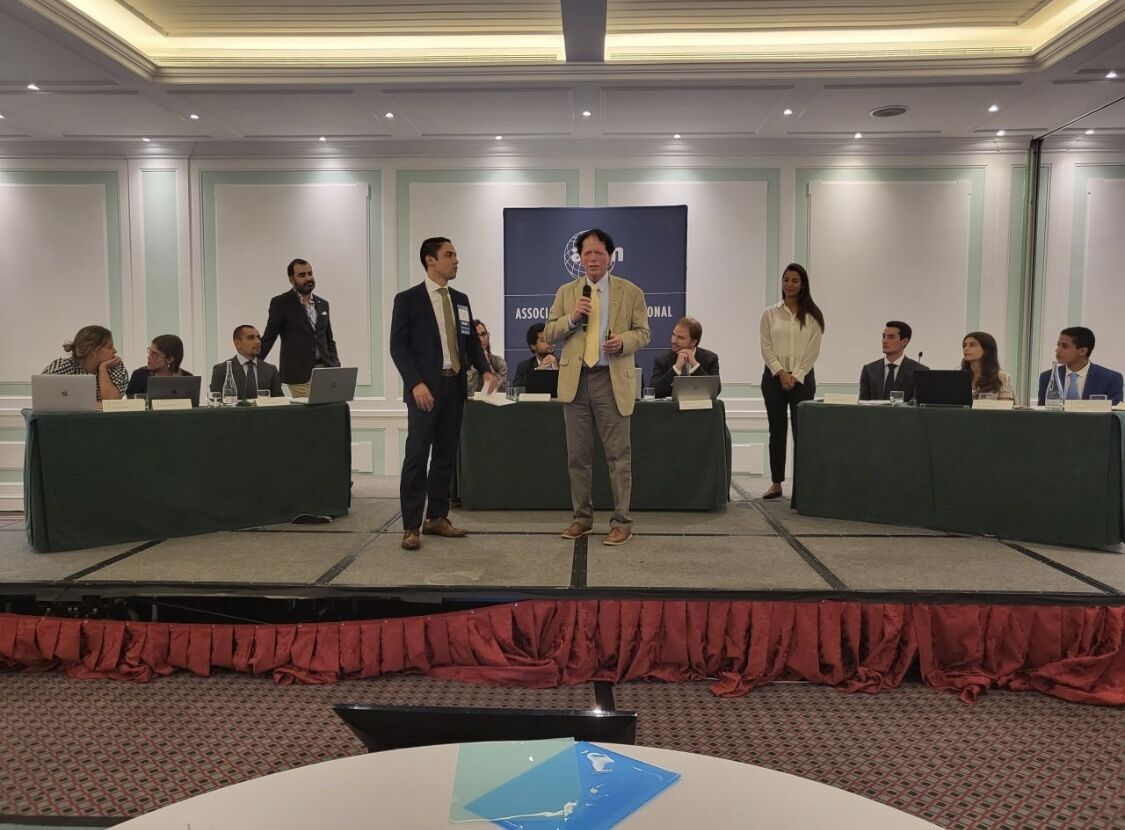In West Virginia v EPA (2022),2 the Supreme Court of the United States (SCOTUS) capped off a year of reckoning for the major questions doctrine applied to the Clean Power Plan (CPP) rule. The latter is a 2015 Environmental Protection Agency (EPA) regulation aimed at tackling greenhouse house gas (GHG) emissions resulting from coal and natural gas electricity production in the US. In essence, the Court framed the case around two questions: (i) whether addressing climate change was a question of great political and economic significance; and (ii) whether Congress had given the EPA a clear statutory authorization to regulate it. By replying yes to the first question and no to the second, SCOTUS dealt a crippling blow to the EPA’s regulatory powers in addressing climate change and wrought a mighty new weapon, a new major questions doctrine, to attack what it may perceive as administrative and regulatory overreach. This blogpost aims to explore the reasoning and ramifications of the SCOTUS opinion in this pivotal case.
1. Legal and Factual Background
The facts of this case can be quickly summed up as follows. In 2015, under the Obama Administration, the EPA approved the Clean Energy Plan. This plan was the first US regulation to propose reducing overall GHG emissions from coal and natural gas power plants. It contained three types of measures, categorized in two distinct groups. The first type of measures were “heat rate” improvements for coal-fired power plants, designed to improve their efficiency and reduce overall emissions from coal-powered electricity production. These measures were designed with a facility-wide scope. However, the CPP recognized that this kind of measures would only have a minimal impact on the desired reduction of GHG emissions and a new approach was required. The
second category of measures was designed to have a grid-wide effect by operating a “generation shifting” in electricity production. This was achieved by a gradual transition in electricity production, firstly, from coal to natural gas and, secondly, from coal and natural gas to renewable energy sources, such as wind and solar.
Statutorily, the EPA relied on the powers granted to it by Section 111(d) of the Clean Air Act of 1963 to issue the CPP.3 This statute granted the EPA authority to define the best systems of emission reductions (BSER) for existing emission’s sources and to regulate a standard of performance based on it. However, the second category of measures raised immediate questions about the limits of EPA´s power to issue, on which motivated the challenge before the court. In 2016, SCOTUS blocked the implementation of the CPP. In the 2019, the Trump Administration repealed the CPP, which it considered to have exceeded the EPA’s statutory powers, and replaced it with the Affordable Clean Energy (ACE) rule which only maintained the first category of measures and scrapped the “generation shifting” measures. This repeal and replacement were also challenged in D.C. courts and the court vacated and remanded the repeal of the CPP and the new ACE rule. This court’s decision was followed by a new change in Presidential Administrations which signalled to the court its intention to promulgate new rules under the authority granted by Section 111(d) of the Clean Air Act.
2. The Judgement
When the case arrived at the docket of the Supreme Court, the federal government argued that this dispute lacked Article III standing, since there existed no real dispute. The challenged regulation – the CPP – had never been implemented by the Obama Administration, had been repealed by the Trump Administration, and the Biden Administration stated that it did not wish to enforce it and intended instead to promulgate new regulations on this topic. Despite this, the Court held that the case remained justiciable because “’voluntary cessation does not moot a case’ unless it is ‘absolutely clear that the allegedly wrongful behavior could not reasonably be expected to recur.’”.4 The Government restated its belief on the legality of the “generation shifting” measures and thus the case was decided on its merits.
The crux of this case laid with the set of “generation shifting” measures and whether these measures could reasonably be based on the regulatory authority of the EPA established under Section 111(d). Under this provision, Congress granted the EPA authority to define BSER’s for existing electricity production units. Intuitively, it is reasonable to make these two claims: (i) the two categories of measures proposed (facility efficiency and generation shifting) are substantially different, the first being limited in scope and technology-based and the second being much broader in scope and based in an economic transformation in electricity production; (ii) both can be reasonably construed, under normal statutory interpretation, as systems for the reduction of emissions.
The Court’s Opinion, drafted by Chief Justice Roberts, proposes that normal statutory interpretation is not enough for this case. One thing is to read in Section 111(d) a congressional authorization that allows the EPA, through the adoption of technological standards of cleaner production, to regulate how power plants operate. Another entirely different reading of this provision is to extract from it a congressional authorization to effect a major economic transformation in the production of electricity nationwide.
The urgent need to address climate change might – quite rightly – urge this sort of action. But does it resist the overwhelming weight of the separation of powers under the US Constitution? The majority in the Court thinks it does not:
“We presume that Congress intends to make major policy decisions itself, not leave those decisions to agencies. Thus, in certain extraordinary cases, both separation of powers principles and a practical understanding of legislative intent make us reluctant to read into ambiguous statutory text the delegation claimed to be lurking there. To convince us otherwise, something more than a merely plausible textual basis for the agency action is necessary. The agency instead must point to clear congressional authorization for the power it claims.”5
3. Comments
Here we find the major questions doctrine clearly framed by Chief Justice Roberts. The Court’s Opinion seeks to find support for this doctrine in the Court’s precedents.
Indeed, this doctrine does find echoes of it in past decisions of the Court.6 However, as DEACON and LITMAN point out,7 this is an entirely new major questions doctrine: where the proposed regulation deals with major policy decisions of great political and economic significance, agencies need to point to a “clear congressional authorization”. In effect, this is a new “clear statement” rule8: a more stringent canon of statutory interpretation based on the need to protect the fundamental architecture of the separation of powers under the US Constitution. Agencies like the EPA, part of the Executive Branch of Government, have only those regulatory powers which are delegated to them by Congress, the seat of Legislative Power, and enabling legislation is not an “open book to which the agency [may] add pages and change the plot line.”9 As such, the EPA, lacking a clear congressional authorization, cannot lawfully regulate electricity production in this way with the aim of reducing GHG emissions.
While accepting the fundamental architecture of the separation of powers, it is nonetheless reasonable to question the burdensome nature of this novel canon of statutory interpretation.
The Dissenting Opinion in this case, drafted by Justice Kagan, disputes not only the majority’s reading of the institutional and statutory history of EPA regulations under Sections 111(d), but also that this new reading of the major questions doctrine may be found clearly in the precedents of the Court. Justice Kagan argues that, in past decisions where the majority purports to find this doctrine, the Court applied a normal statutory interpretation which did not require the higher threshold of clear congressional authorization to be met.10 If a given power could be reasonably construed from the text of an enabling legislation, then that was all that sufficed for it to be lawful. Indeed, Justice Kagan further points out that the openness and vagueness of certain grants of regulatory power are features – not bugs – of a normal administrative state, that requires a degree of
flexibility of its executive and regulatory agencies in dealing with new and urgent questions.
The Clean Air Act of 1963 was not attuned to the urgency of climate change action nowadays. However, it seems that the majority of the Court sees this not as an urgent need for greater regulatory flexibility and action in dealing with climate change challenges but as a way to block this action. If Congress, in 1963, wanted the EPA to deal with climate change, it would have said so. This would seem reasonable if the 1963 members of Congress were possessed of very powerful divination abilities.
With this decision, it is difficult to predict what further rippling effects this crippling blow to the EPA’s powers will have on the ability of US institutions to deal with the challenges of climate change. On the other hand, it is not difficult to predict that further challenges to the regulatory powers of other executive agencies may be coming soon11 to a Court which seems eager to fight against administrative and regulatory overreach. By relying on this new major questions doctrine, the Court seems to have crafted a perfect Excalibur to embark on a crusade against a sprawling administrative state and in preservation of the sanctity of the separation of powers. But at what cost?
Is Climate Change a Major Question? It is. And the fact that it is a major question might have just made it harder for the EPA to deal with.
1 Guest Assistant Lecturer of the Political Studies Department at the Faculty of Social Sciences and Humanities of NOVA University Lisbon and PhD Candidate at NOVA School of Law.
2 West Virginia et al. v. Environmental Protection Agency et al., 597 U.S. ___ (2022).
3 42 USC § 7411(d).
4 West Virginia v EPA (2022), p. 15-16.
5 West Virginia v EPA (2022), p. 19.
6 For general overview see M. Coenen and S. Davis, “Minor Courts, Major Questions” in 70 Vanderbilt Law Review (2017), pp. 777-843.
7 D. Deacon and L. Litman, “The New Major Questions Doctrine” (2022), Law & Economics Working Papers 239 (University of Michigan), available at: https://repository.law.umich.edu/law_econ_current/239.
8 J. F. Manning, “Clear Statement Rules and the Constitution” in 110 Harvard Law Review (2010), pp. 400-451.
9 E. Gellhorn and P. Verkuil, “Controlling Chevron-Based Delegations” in 20 Cardozo Law Review, p. 1011.
10 The main precedents disputed by Justice Kagan are the decisions in FDA v. Brown & Williamson Tobacco Corp., 529 U.S. 120 (2000), Gonzales v. Oregon, 546 U.S. 243 (2006) and Utility Air Regulatory Group v. EPA, 573 U.S. 302 (2014).
11 C. J. Walker, “A Congressional Review Act for the Major Questions Doctrine” in 45 Harvard Journal of Law and Public Policy (2022), pp. 773-793.



